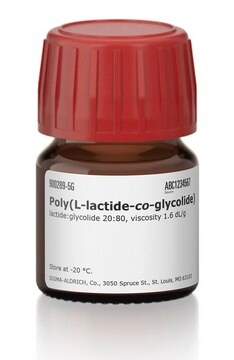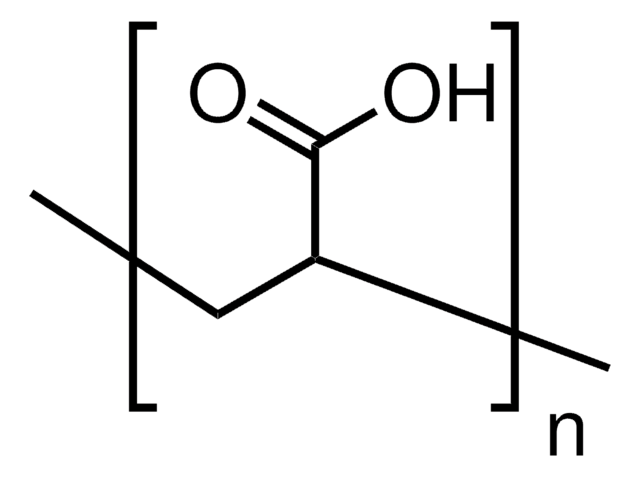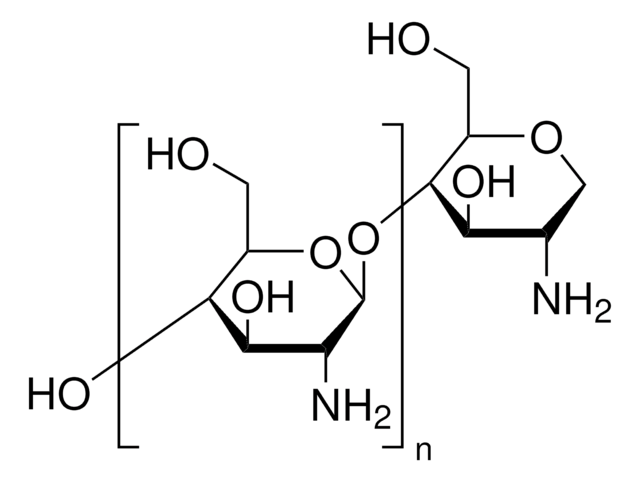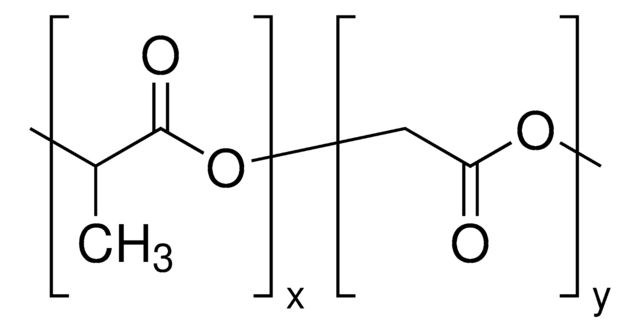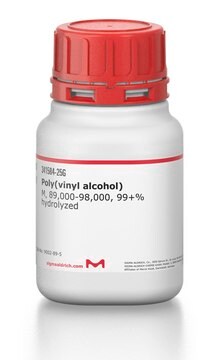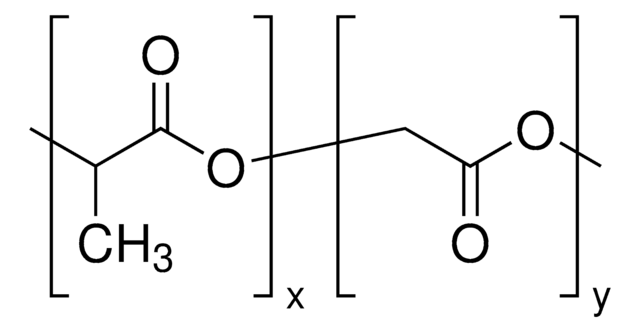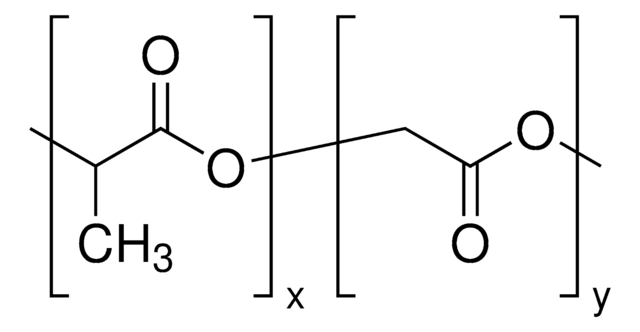901021
Poly(L-lactide-co-glycolide)
10:90, viscosity 1.7 dL/g
Sinônimo(s):
PLGA
About This Item
Produtos recomendados
Nível de qualidade
Formulário
chips
proporção de alimentação
lactide:glycolide 10:90±5
características do produto alternativo mais ecológico
Design for Energy Efficiency
Use of Renewable Feedstocks
Learn more about the Principles of Green Chemistry.
sustainability
Greener Alternative Product
cor
light yellow to tan
viscosidade
1.4-2.0 dL/g
1.7 dL/g
categoria alternativa mais ecológica
Condições de expedição
dry ice
temperatura de armazenamento
−20°C
Descrição geral
Aplicação
Código de classe de armazenamento
11 - Combustible Solids
Classe de risco de água (WGK)
WGK 3
Ponto de fulgor (°F)
Not applicable
Ponto de fulgor (°C)
Not applicable
Escolha uma das versões mais recentes:
Certificados de análise (COA)
Não está vendo a versão correta?
Se precisar de uma versão específica, você pode procurar um certificado específico pelo número do lote ou da remessa.
Já possui este produto?
Encontre a documentação dos produtos que você adquiriu recentemente na biblioteca de documentos.
Os clientes também visualizaram
Artigos
Professor Nicola Tirelli (Istituto Italiano di Tecnologia, Italy) highlights the microfluidic-assisted method for fabricating well-defined and reproducible nanoparticles for drug delivery research.
Professor Nicola Tirelli (Istituto Italiano di Tecnologia, Italy) highlights the microfluidic-assisted method for fabricating well-defined and reproducible nanoparticles for drug delivery research.
Global Trade Item Number
| SKU | GTIN |
|---|---|
| 901021-5G | 4061832922294 |
Nossa equipe de cientistas tem experiência em todas as áreas de pesquisa, incluindo Life Sciences, ciência de materiais, síntese química, cromatografia, química analítica e muitas outras.
Entre em contato com a assistência técnica